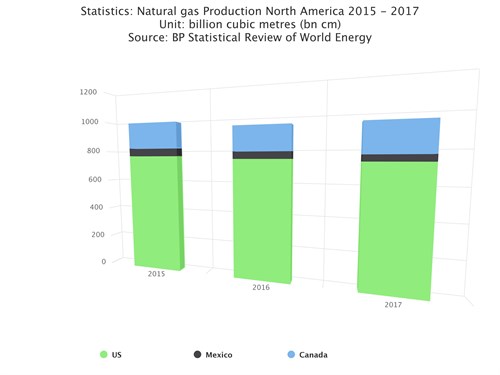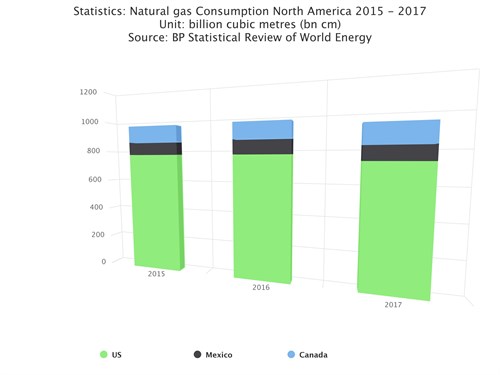U.S. natural gas output, demand seen rising to record highs in 2018
(Reuters) - U.S. dry natural gas production should rise to an all-time high of 81.10 billion cubic feet per day (bcfd) in 2018 from 73.57 bcfd in 2017, according to the Energy Information Administration’s Short Term Energy Outlook (STEO).
 |
| SOURCE: EWA |
The latest August output projection for 2018 was down from the EIA’s forecast of 81.34 bcfd in July but would still easily top the current annual record high of 74.15 bcfd produced on average in 2015.
EIA also projected U.S. gas consumption would rise to an all-time high of 79.57 bcfd in 2018 from 74.22 bcfd in 2017.
That 2018 demand projection in the August STEO report was down from EIA’s 79.65-bcfd forecast for the year in its July report but would still easily top the current annual record high of 75.10 bcfd consumed on average in 2016.
 |
| Source: EWA |
In 2019, EIA projected output would rise to 84.10 bcfd, while usage would slip to 79.47 bcfd.
After the United States became a net gas exporter for the first time in 60 years in 2017, EIA projected U.S. net exports would rise to 2.0 bcfd in 2018 and 5.4 bcfd in 2019, up from 0.4 bcfd in 2017.
In electric generation, EIA projected gas would remain the primary U.S. power plant fuel in 2018 and 2019 after it took that title from coal for the first time in 2016.
EIA projected gas’ share of generation would rise to 34 percent in 2018 and 35 percent in 2019 from 32 percent in 2017.
Coal’s share of generation, meanwhile, was forecast to slide to 28 percent in 2018 and 27 percent in 2019 from 30 percent in 2017.
EIA projected the electric sector would only burn 650.5 million short tons of coal in 2018, which would be the lowest in 35 years, and 615.8 million short tons in 2019, the lowest since 1982. That compares with 664.7 million short tons in 2017, which was the lowest amount since 1984.
U.S. carbon emissions have dropped as the power sector burns less coal.
After U.S. energy-related carbon dioxide emissions declined to 5,142 million tonnes in 2017, the least since 1992, EIA projected they would rise to 5,2473 million tonnes in 2018 and 5,206 million tonnes in 2019 because of changes in weather, economic growth and energy prices. (Reporting by Scott DiSavino Editing by Paul Simao)

- ExxonMobil halts 1-Bft3d blue hydrogen project in Texas
- Aramco and Yokogawa commission multiple autonomous control AI agents at Fadhili gas plant
- Ukraine will resume gas imports via Transbalkan route in November
- Mitsubishi to inject $260 MM into Brunei LNG project
- Freeport LNG (U.S.) on track to take in more natgas on Thursday after unit outage



Comments